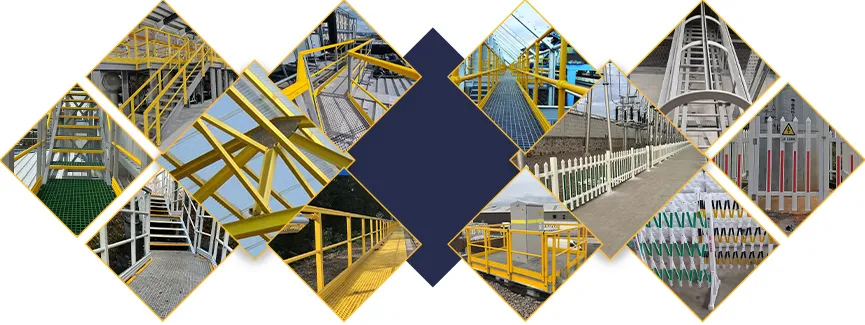loading...
- No. 9, Xingyuan South Street, Dongwaihuan Road, Zaoqiang County, Hengshui, Hebei, China
- admin@zjcomposites.com
- +86 15097380338
- Welcome to visit our website!
Exploring the Cost Factors of FRP Channel in Today's Market Landscape
Understanding the Dynamics of FRP Channel Pricing
Fiber Reinforced Polymer (FRP) channels have garnered significant attention in various sectors due to their unique properties such as high strength-to-weight ratio, corrosion resistance, and design flexibility. As industries increasingly lean towards advanced materials to enhance performance and durability, the pricing of FRP channels becomes a pivotal topic. This article delves into the factors influencing FRP channel prices, market trends, and their implications for various stakeholders.
Factors Influencing FRP Channel Prices
1. Raw Material Costs The primary driver of FRP channel pricing is the cost of raw materials. FRP composites are typically made from fiberglass or carbon fibers and resins. Fluctuations in the prices of these materials directly affect the final price of FRP channels. For instance, if there's an increase in the price of fiberglass due to supply chain constraints or increased demand, we can expect a corresponding rise in FRP channel prices.
2. Manufacturing Processes The complexity of manufacturing methods used to produce FRP channels also plays a crucial role in pricing. Processes such as pultrusion, filament winding, or resin transfer molding require different equipment and levels of expertise. More sophisticated processes tend to be costlier, thereby influencing the overall price of the final product.
3. Market Demand and Supply The basic economic principle of supply and demand significantly impacts FRP channel pricing. Industries such as construction, automotive, and aerospace are increasingly adopting FRP materials, leading to higher demand. If the supply of FRP channels does not keep pace with this rising demand, prices are likely to increase.
4. Geopolitical Factors Geopolitical events can disrupt supply chains and influence trade tariffs, affecting the availability and pricing of raw materials and finished goods. For example, trade restrictions or geopolitical tensions in regions that supply raw materials can lead to increased costs, subsequently impacting FRP channel prices.
frp channel price

5. Technological Advancements Innovations in manufacturing processes and material science can also play a role in pricing. As technology progresses, it may lead to more efficient production methods that can lower costs. On the other hand, advanced FRP channels that incorporate new technologies may command a premium price.
Current Market Trends
Recent market analyses indicate a growing trend towards sustainable construction materials. As environmental regulations tighten, many industries are looking for products that not only deliver performance but also reduce carbon footprints. This trend has positively influenced the demand for FRP channels, leading to increased investment in production capacity. Consequently, manufacturers might raise prices in response to higher demand or reinvestment into their operations.
Moreover, as awareness of the long-term benefits of using FRP materials grows, more industries are likely to consider these products for their durability and lower maintenance costs. This shift in perspective is expected to keep FRP channel prices on a gradual upward trajectory as more businesses recognize the value they offer.
Implications for Stakeholders
For manufacturers, understanding pricing dynamics is essential for strategic planning and financial forecasting. They must navigate both the costs of production and the competitive landscape while ensuring they remain profitable. For consumers, whether in construction or manufacturing, awareness of these pricing factors is crucial for budgeting and project planning.
In conclusion, the pricing of FRP channels is influenced by a multitude of factors ranging from raw material costs to market dynamics and technological advancements. As the demand for advanced materials continues to rise, so too will the complexities surrounding their pricing. Stakeholders must remain vigilant and informed as these factors evolve, shaping the future of the FRP channel market.
-
Premium FRP Handrail for All ApplicationsNewsAug.29,2025
-
Low Maintenance FRP Mini Mesh Grating ProductsNewsAug.29,2025
-
Innovative FRP Square Tubes for Modern Industrial SolutionsNewsAug.29,2025
-
FRP Water Storage Tanks Wholesale Solutions for Bulk BuyersNewsAug.29,2025
-
FRP Molded Grating Solutions for Diverse Industrial ApplicationsNewsAug.29,2025
-
Construction Advancements Through FRP Pultruded ProfilesNewsAug.29,2025
-
Why Choose FRP Railings, Guardrails, and Handrail Systems?NewsAug.29,2025
